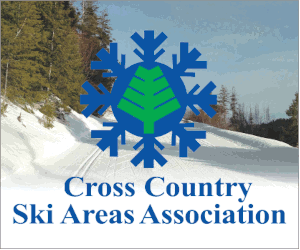July 11, 2021 - Legendary former U.S. and Canadian Head Coach Marty Hall always said, “As a Nordic skier, never leave your house without your poles,” and as general advice, which I say with a smile, your wax will always work better come winter the more specific your summer training. Rollerskiing is the most ski-specific dry land training for cross-country skiing, but how do you get the most from the time you invest in your training? The number of work outs and the number of hours depend to a large extent on how much time you can invest in training.

For most ambitious skiers, about half of their overall training volume will be on rollerskis. For marathon racers, most of that volume is double-poling during both dis tance-workouts and intervals. While rollerskiing is the most ski-specific dryland training for cross-country skiing, it does carry some additional risks. Here is a quick guide to get you safely on the road during summer and fall training in prepara tion for the winter. First off, let us say life is hard and pavement is harder, so before you head out for a rollerski, always grab your hel met and wear it for your entire workout. In most cases, rollerskiers are considered
pedestrians. It is generally preferred that roll erskiers ski in the same direction as cyclists and drivers. However, in most cases, roller-skiers can also use the sidewalks, pedestrian crossings and bike/walking paths as long as they are considerate of those walking there. Statistics show that most traffic accidents in volving rollerskiers happen because roller skiers are hit by drivers who don’t see them or when rollerskiers run into another vehicle because they can’t stop in time. Accordingly, one of the most important safety measures rollerskiers can take is to make sure they are visible to drivers and others who use the roads. Make sure to wear plenty of reflective clothing – and not only on your upper body. Put reflective tape on your rollerski poles, and wear reflectives on your legs as well.
When rollerskiing on an open road, a good rule of thumb is to double-pole only when you see an oncoming car, as a passing car will not have as much room to give you space. As a reference, when you are skating, your poles swing out farther than your skis, thus giving you and motorists less room to antici pate than you may think.
While you’re out putting in the rollerski miles and dreaming about winter, did you prepare your skis for the next winter season when you put them away in summer storage? Taking good care of your skis over the sum mer will not only make them fast come winter, but it will also make them last longer. Glide zones left dirty and dry will oxidize over the summer, leaving them feeling slow in the fall, even with new wax. If you missed this step back in the spring, spend a few minutes on your skis now and your boards will be ready to go when the snow flies again in late fall and early winter.
Start by cleaning off any remains of klister and kick wax. Scrape off the worst with a metal scraper dedicated to kick wax or a klister paddle (those plastic scrapers that come with the klister tubes). Then apply liber al amounts of wax cleaner, wipe clean and dry with Fiberlene or shop towels. Feel the surfaces with your hands to make sure all sticky residue is removed. Don’t forget to wipe down the bindings, tops and sides of the skis as well. Once the skis are clean and dry, apply a medium-hard glide wax to all glide zones. Don’t put glide wax in the kick zone on Classic skis. Using a medium-hard glide wax for summer storage saves the step of re-waxing with a colder glide wax when you are ready for that first ski in late fall.
As a driver, what can you do to make the roads safer for rollerskiers? Most drivers don’t know that rollerskiers can’t easily stop on a dime. This is super-important to keep in mind when you plan to make turns, especial ly right turns. Also, as a driver, make sure to give rollerskiers plenty of room and don’t pass a rollerskier who is using the right lane when there is oncoming traffic. For reference, a general rule for passing cyclists is to give them 1.5 metres of space.
While there is no hard requirement for roll erskiers, this is a good rule of thumb. Finally, check your blind spots frequently, especially when making right turns. As a driver, try roll erskiing or cycling from time to time to put yourself in their shoes and to get an idea what the traffic picture is from their perspective.






